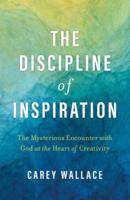Publisher's Synopsis
Leonardo's Defense: Two Mona Lisas
Making the Case for the Walters Art Museum Masterpiece
Did Leonardo da Vinci truly paint only one Mona Lisa in thirteen years? Art scholars have long debated this question, and conventional wisdom holds that only about fifteen authenticated paintings by the master exist. But what if history has overlooked another masterpiece?
In Leonardo's Defense: Two Mona Lisas, art historian Kuang Lin presents groundbreaking research that challenges traditional narratives. Using a unique combination of art history, mathematical analysis, and geometric principles-including the discovery of the golden angle (112.24°) in all of Leonardo's recognized paintings-Kuang builds a compelling case for the Mona Lisa housed in the Walters Art Museum in Baltimore as an authentic work by Leonardo himself.
This book takes readers on a fascinating journey through Da Vinci's artistic process, exploring:
How the golden angle serves as Leonardo's hidden signature
Clues within the Vitruvian Man and Ginevra de' Benci that connect to his larger body of work
The historical mystery of why Leonardo may have created multiple versions of Mona Lisa
The struggle to gain recognition for newly discovered works in the world of art authentication
Kuang Lin's expertise spans premodern Chinese paintings, Renaissance (Da Vinci) paintings, Jean-François Millet's paintings, Qing Dynasty China trade paintings, and the works of Leonabel Jacobs. His interdisciplinary approach offers fresh insights into historical artworks, bridging Eastern and Western artistic traditions with innovative methodologies.
Completed in the historic Andrew W. Mellon Building in Historic Downtown Manassas, Virginia-a landmark originally built as a U.S. Post Office in 1931 and now home to Marscloud Art Gallery-this book is both an academic investigation and a passionate defense of artistic truth.
For art lovers, historians, and anyone fascinated by Leonardo's genius, Leonardo's Defense: Two Mona Lisas is a must-read that will change the way you see the Renaissance master's work forever.









